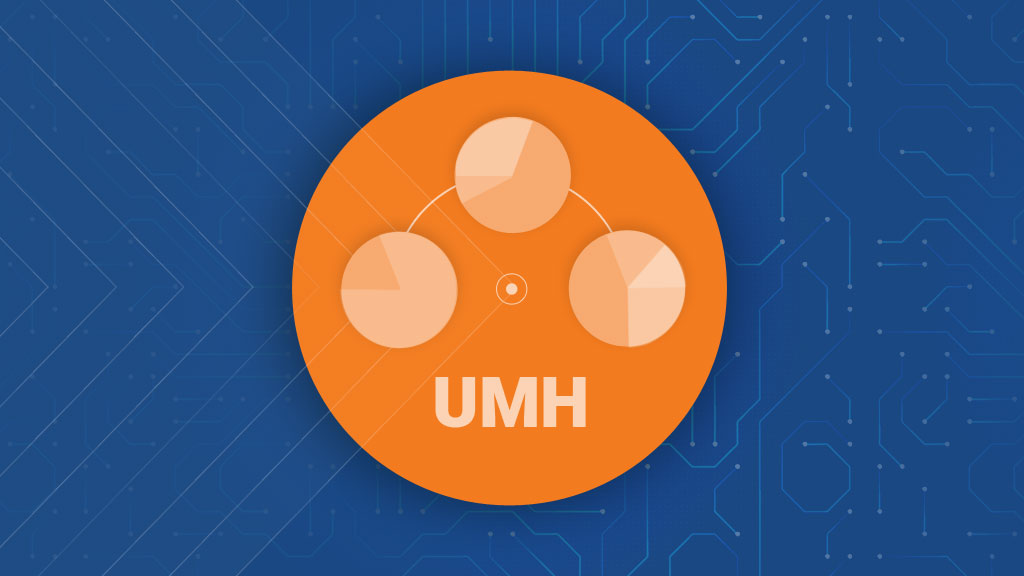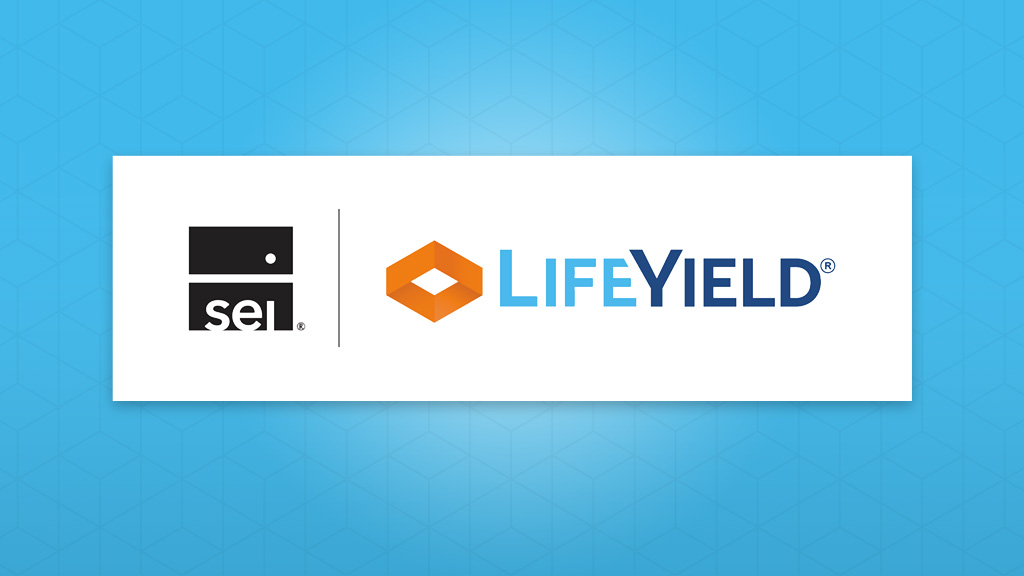Wealth Technology Solutions That Power a Unified Managed Household

Technology has revolutionized financial advice, democratized it, and made its value ever more apparent to millions of investors. But as investors gain experience, they realize that market returns and rebalancing portfolios aren’t the whole story:
It’s the net value of the money they get to keep that matters most.
That explains why advisors and their firms are placing more emphasis on creating tax efficiency in the portfolios they manage – and highlighting how they do it in their proposals to new clients and ongoing relationships with existing clients.
Unified Managed Household: A Superior Approach
To provide tax-smart advice throughout an investor’s life, an advisor is in the best position when taking the unified managed household approach (UMH).
The unified managed household describes how advisors, enabled by technology, can handle all tax-qualified and taxable accounts owned by members of a client household for optimal tax efficiency and maximum income.
Of course, capturing even a snapshot of those accounts and all their assets was, for a long time, a manual, tedious, and often impossible task. Advisors might only, for example, have managed a client’s taxable accounts without any insight into their tax-advantaged accounts, such as 401(k) accounts and individual retirement accounts (IRAs).
Technology, however, now puts the advisor goal for UMH solidly within reach. Even if clients hold assets away from an advisory firm, technology can allow advisors to include those accounts in their financial planning, advice, and proposals. And clients will quickly appreciate the difference.
At LifeYield, we have worked with the top names in the advisory industry and their technology partners to add tax-smart capabilities that make the unified managed household the financial advice concept whose time has arrived.
The Unified Managed Household Promotes Tax Efficiency
Unified managed household technology minimizes the tax bite from portfolios by measuring the potential tax impact of investments, transfers, and withdrawals in advance – and recommending the next best steps for investors to take.
UMH advances the traditional advisor approach of assessing investor risk tolerance, evaluating investment costs, and presenting risk/return analyses. UMH accounts for the significant (but often silent) effect of taxes on the money available to clients over their lifetimes.
An EY study found that investors could realize up to one-third more wealth by practicing multi-account tax-efficient asset location, deploying tax harvesting across a portfolio, and performing dynamic withdrawals.
Put another way, the unified management household pulls clients and their advisors back from making moves that inadvertently cost clients money they might otherwise have kept.
Let’s remember this: UMH is good for your business. It empowers advisors to increase their assets exponentially under management while doubling down on their attention to each client’s needs, wants, situations, and goals.
Wealth Technology Solutions in a Unified Managed Household (UMH)
LifeYield specializes in wealth technology solutions that automate and personalize tax management for client households. Firms write the roadmaps for the tools they will incorporate into their platforms, evaluating which will bring the most value to their client base. LifeYield provides those firms with the engines through application programming interfaces or APIs.
LifeYield tax-smart technology can be perched on top of any firm’s existing toolset for financial planning, investment advice, and wealth management. As a result, firms save on precious development time (and costs) while maintaining control of both the client and advisor experience.
The principal technology capabilities that let advisors practice the unified managed household are those that empower them to help client households:
- Optimize asset location
- Execute rebalancing across multiple accounts
- Benefit from tax harvesting
- Optimize Social Security benefits
- Make dynamic, tax-smart withdrawals
- Build out income sourcing for retirement
Let’s look at these technology solutions that make up the UMH approach.
Asset Location and UMH
Asset location is a tax-minimizing strategy that works like this: Clients buy and hold different investments in different accounts based on the accounts’ tax treatments (tax-exempt, tax-deferred, and taxable accounts).
So, investments with a high potential tax burden – an example is an actively managed mutual fund that produces many short-term capital gains – are better located in an account that benefits from tax deferral, like an individual retirement account (IRA).
Investments with fewer tax consequences – like tax-free municipal bonds or stocks an investor intends to hold for more than one year — are better located in a taxable brokerage account.
Asset location technology from LifeYield scans all the accounts that make up a household portfolio and produces a score of the portfolio’s tax efficiency. That’s step one.
In step two, LifeYield recommends what moves investors can make in their accounts to improve their overall tax efficiency. And to help advisors illustrate this for clients, LifeYield provides a second tax efficiency score and estimated value of tax savings over time.
LifeYield’s technology is one of the most elaborate on the market. Yet, it simplifies the process, produces concise results, and provides hard and fast evidence of the power of asset location.
Multi-Account Rebalancing and UMH
Asset location is sometimes confused with asset allocation, another investment strategy core to producing the best possible outcomes for your clients. Asset allocation requires that you adjust the percentage of every asset in a portfolio to stay aligned to your client’s risk tolerance, investment period, and goals.
Asset classes perform differently, which means a portfolio mix drifts from its original targets over time. Rebalancing is the practice of periodically evaluating and realigning the allocation of investments in a client’s portfolio to see that the portfolio stays within the desired mix and proportion of asset classes.
LifeYield Multi-Account Rebalancing enables financial advisors to perform rebalancing across all accounts in a household portfolio. Besides realigning investments to the desired asset allocation, Multi-Account Rebalancing also helps advisors make sure that:
- Assets are sold in the most tax-efficient way.
- Assets are located in the most tax-advantaged account.
- Every trade is an opportunity to harvest any gains or losses needed to reduce tax liability.
Multi-Account Rebalancing is another powerful practice for advisors who understand that wealth management is insufficient unless it hews to the unified managed household approach.
Tax Harvesting and UMH
Tax harvesting is the process of using a client’s investment losses to help offset the client’s investment gains. The goal of tax harvesting is often to reduce a client’s total annual tax bill, but it can also help identify appreciated assets that a client might want to gift or donate to charity.
With LifeYield Tax Harvesting, advisors have technology that allows them to scan all the taxable and tax-advantaged accounts in a household portfolio and instantly identify opportunities to harvest losses or gains. It helps advisors:
- Limit capital gains – Offset short-term or long-term capital gains by selling securities at a loss. Short-term is typically the priority, but LifeYield accounts for both.
- Identify appreciated lots – Sell winning investments to realize capital gains. This can be used to find the most appreciated assets for gift giving or charitable donations.
- Avoid wash sales – LifeYield looks at all taxable and non-taxable accounts and identifies any potential wash sales.
LifeYield Tax Harvesting adapts to the period – short-term, long-term, or any term – suitable to the client’s current and future tax brackets. It allows an advisor to set a limit for the total gain or loss produced by security sales while keeping the total value of those sales as small as possible. And it allows advisors to put a limit on the total value of all the sales suggested (significant when the entire transaction needs to stay under a specific dollar amount).
Social Security, Retirement Income and UMH
When clients consider retirement, one of the first questions they will have for their advisor is: “When do I file for Social Security?”
If you’ve been managing a household portfolio in tax-smart ways, you’ve put them on a solid path using the practices (and technology) we’ve already described. Now it’s your job to make sure they get the most they can get out of Social Security.
You’ll find that few clients appreciate the long-term benefits of delaying Social Security filing. And they can’t possibly fathom how the thousands of Social Security rules could affect a widowed spouse. That’s where technology can help human advice to deliver results.
LifeYield Social Security+ is another unified managed household tool that can help you provide enormous value to your clients. With just five or so key inputs, you can run an illustration that compares different strategies for both (when there are two) household members to file for Social Security benefits and what survivor benefits will be if one outlives the other.
If delaying until age 70 – when benefits max out – is the step clients choose, their next series of questions may be about how they use their other assets for retirement income. With Income Layers in Social Security+, you can model different income scenarios and, if needed, begin to discuss how to plug any gaps or adjust their plans, so they are confident about their retirement choices.
Conversations about Social Security are often gateways to discussions about consolidating assets with an advisor or firm and potentially to recommendations for products, such as annuities or life insurance, that provide income protection.
Tax-Smart Withdrawals in the Unified Managed Household
Simplistic approaches to decumulation – the process of withdrawing from accounts in which clients saved and invested for retirement – used to be the norm. The generally accepted advice was: Withdraw from taxable accounts first and then from tax-advantaged accounts.
The problem is that simple approaches failed to consider the tax consequences of each sale or withdrawal for the client household. They also ignored the potential to maximize income and minimize taxes through asset location, multi-account rebalancing, tax harvesting, and a Social Security filing strategy.
Still, when it’s time for a client household to begin to make withdrawals, you want to be sure those are tax-smart withdrawals. That’s where LifeYield technology comes in.
LifeYield Tax-Smart Withdrawals helps advisors make recommendations for the best next move in decumulation for their clients by
- Identifying a cost-effective way to make withdrawals across multiple accounts to meet an income need.
- Automating the complicated and time-consuming processes to execute tax-smart withdrawals in seconds.
- Adapting to each household’s unique situation and identifying the next-best steps.
- Ensuring that the optimal asset location is maintained for investments following every withdrawal.
And by recommending tax-smart withdrawals, advisors help clients pay less in taxes and keep more money working in their portfolios. The benefit to the advisor: more assets under management (AUM).
Retirement Income Sourcing in the Unified Managed Household
LifeYield Tax-Smart Income Sourcing, the newest technology tool in the LifeYield API library, harnesses the power of UMH practices and gives advisors the tools to create personalized, tax-wise retirement funding plans. And that is what clients want from their advisors.
The LifeYield Tax-Smart Income Sourcing API incorporates income from all sources – including Social Security, annuities, pensions, and others – to provide a comprehensive picture of income sourcing over any period.
Income Sourcing helps advisors pivot from the intensive and engaging financial planning process to deliver a pathway to retirement for their clients.
- It uses the output from a firm’s retirement planning system and enhances it by factoring in details around taxes, rebalancing, and withdrawals.
- It compares potential income sourcing strategies to identify the next best steps to draw down from a client’s assets by considering their investment objectives and minimizing taxes.
- It produces a detailed breakdown of federal and state taxes, accounting for tax brackets, deductions, Social Security taxation, investment taxes, Medicare, personal exemptions, and more.
Thousands of individuals are reaching retirement age every day in the United States. Advisors and firms who can navigate them through the “decumulation” of household portfolios to secure retirements – and add the “alpha” of tax efficiency — will stand out from their peers.
Benefits of Using LifeYield UMH Wealth Management Technology Solutions
There are multiple benefits for firms, advisers, and investors that choose LifeYield’s multi-account solutions to manage households, including:
- Clear guidance on maintaining both asset location and asset allocation that minimize taxes and stay in line with a household’s risk tolerance and timeline.
- Strong evidence for centralizing management of all household accounts with one firm for maximum value and efficiency.
- Peace of mind for investors who want not just assurance that their assets are “likely” to last their lifetimes but a map to where their income will come from during retirement.
With LifeYield APIs, firms do not have to rip up the tech stacks they have carefully built, create phantom “integrations” that are only bridges between applications, or replace tools that work well for their advisors and clients.
LifeYield works with the leading investment and wealth management firms and the companies that support their infrastructure and help them deliver high-quality advice and service.
Those firms recognize that there are three levers to producing results – cost, risk, and taxes – and of those, taxes can have the most significant impact on a client’s retirement.
For them, the unified managed household has arrived.
Monthly insights from our Chief Growth Officer, Jack Sharry
Get exclusive insights and interviews from around the industry

 By
By 




